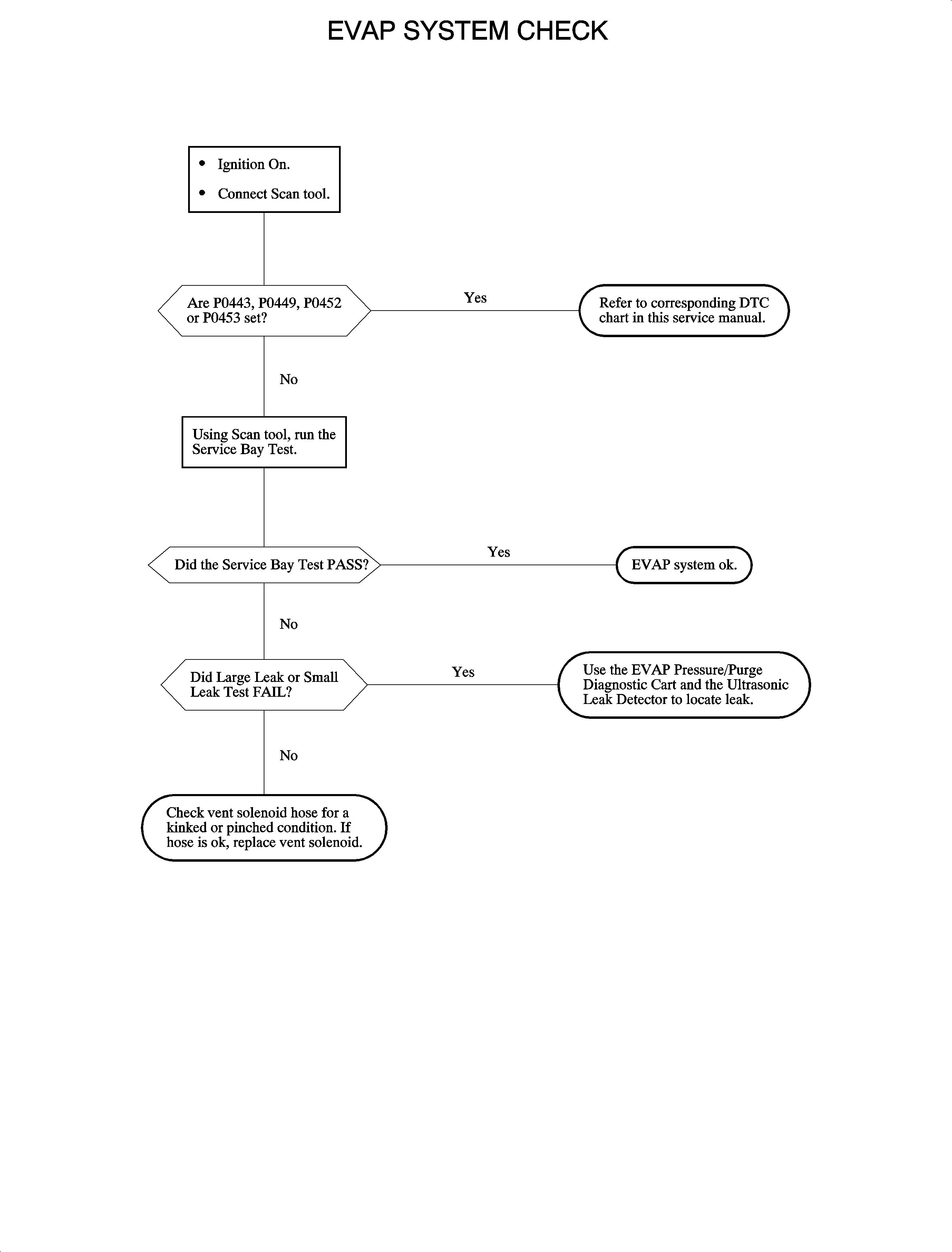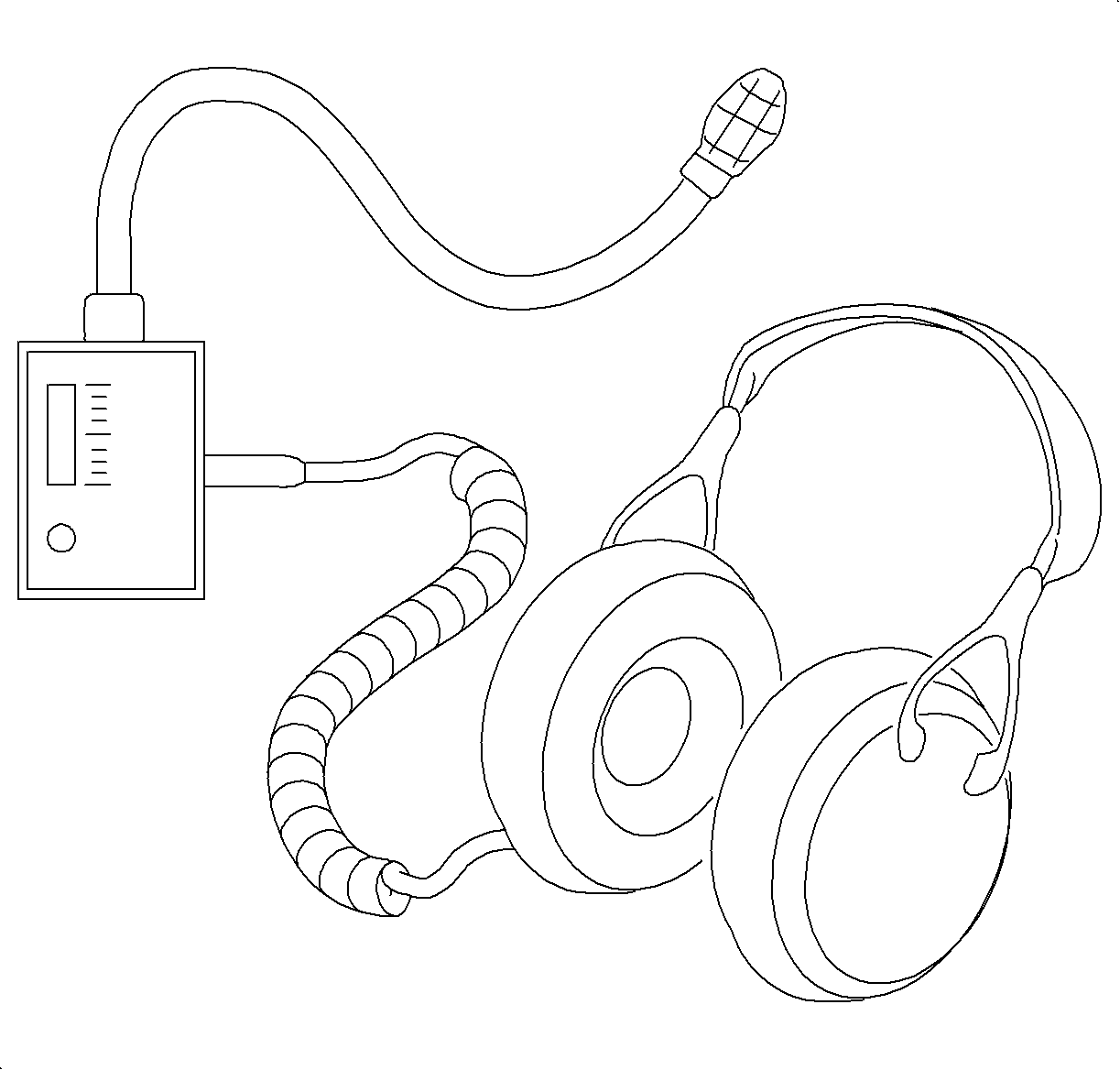EVAP Pressure/Purge Diagnostic Cart Test Procedures

- Ignition RUN position, engine OFF.
- Using a scan tool, command the vent solenoid On (closed)..
- Connect the red hose from the EVAP Pressure/ Purge Diagnostic Station to the EVAP service port. Be sure to finger tighten to prevent damage to the internal hose seal or EVAP service port.
- Open the nitrogen cylinder valve and adjust pressure to 30 inches of H20.
- Turn the control panel rotary valve to the pressure position.
- Use the J 41416 Ultrasonic Leak Detector to locate leak.
- Close the nitrogen cylinder valve.
- Turn the rotary valve to the pressure release position.
- Allow adequate time for the EVAP pressure gage to return to zero inches of H2O.
- Turn the rotary valve to the OFF/Hold position.
- Disconnect the red hose from the service port.
- Repair any leaking components.
- Using the scan tool, run the SERVICE BAY TEST to verify repair.
Important: Make sure the fuel tank is 85 percent full or less. If fuel level is greater than 85 percent drain fuel down to 85 percent full.
Notice: The Ultrasonic Leak Detector should be held as close to the test area as safely as possible. Check around all hoses and connections using a zig-zag motion, carefully covering all suspected areas. If there is no ultrasonic sound present, the display will not show any lights. When an ultrasonic signal is detected, it will be indicated by an increase in the LED meter and an accompanying translation in audio in the headset. A leak will produce a rushing sound in the headset. The sound will become more intense and meter reading will increase as the instrument is drawn closer to the leak point.

Notice: Do not attempt any fuel system servicing when the fuel system is pressurized. The rotary valve must be in the Off/Hold position and all nitrogen pressure must be depleted from the fuel system prior to removal of the fuel cap or disassembly of any fuel system component.
